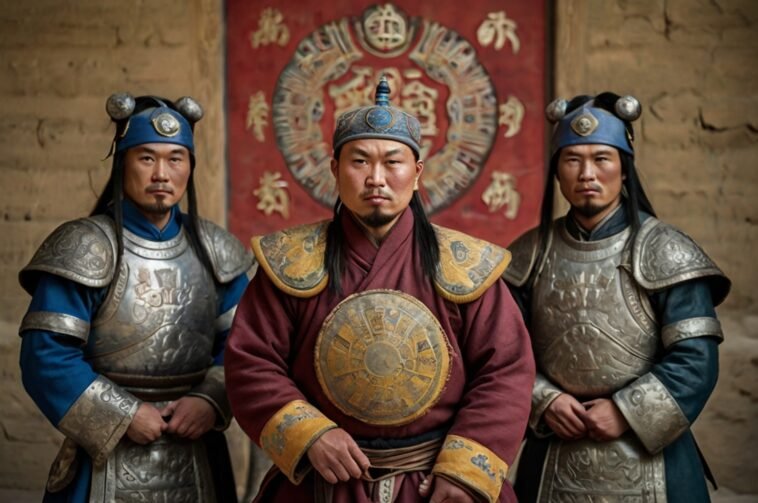
Throughout history, fear has been a powerful tool for empires seeking to maintain control over vast territories and diverse populations.
By leveraging terror, these empires established dominance, deterred rebellion, and ensured compliance.
While this method of governance often yielded short-term stability, it frequently left lasting scars on societies.
This article explores ten historical empires that built and maintained their power through fear and terror.
The Mongol Empire
Under the leadership of Genghis Khan, the Mongol Empire became one of the largest empires in history.
However, their rapid expansion came at a devastating cost.
Cities that resisted Mongol rule were often destroyed, and their populations were massacred.
Historian Jack Weatherford estimates that the Mongols killed as many as 40 million people during their conquests.
This brutal strategy wasn’t just about conquest—it was also about sending a message.
By instilling fear, the Mongols discouraged resistance and made it easier to control newly conquered territories.
The Roman Empire

The Romans were masters of using fear to maintain order, both on the battlefield and within their empire.
Public executions, crucifixions, and the brutal suppression of rebellions were common tactics.
One of the most infamous examples was the destruction of Carthage in 146 BCE.
After defeating Carthage, the Romans razed the city to the ground, enslaved its population, and spread salt on its fields to ensure nothing would grow.
This act of terror served as a stark warning to other states: resist Rome, and face annihilation.
The British Empire
While the British Empire is often remembered for its trade networks and cultural influence, it also used fear to maintain its grip on colonies.
In India, the British response to the 1857 rebellion was particularly brutal.
They carried out public executions and mass reprisals to crush dissent.
Decades later, in 1919, the Jallianwala Bagh massacre became a chilling example of this strategy.
British troops opened fire on a crowd of unarmed Indians, killing hundreds.
This act of violence was intended to intimidate the population and prevent further resistance.
The Ottoman Empire
The Ottoman Empire used fear as a tool to manage its vast and diverse population.
One example of this was the practice of fratricide among sultans, where brothers or other potential rivals were executed to prevent power struggles and civil wars.
This created an atmosphere of fear within the royal family and court.
Another example was the devshirme system, where Christian boys were taken from their families, converted to Islam, and trained as elite soldiers called Janissaries.
This system not only strengthened the empire’s military but also served as a reminder of the state’s absolute authority over its people.
The Qin Dynasty

The Qin Dynasty in China (221–206 BCE), led by Emperor Qin Shi Huang, relied on fear to unify the country.
The emperor suppressed dissent by burning books and even burying scholars alive to silence opposing ideas.
The construction of the Great Wall of China, which cost countless lives, was not just a defense project but also a powerful symbol of the emperor’s control and the lengths he would go to maintain it.
The Aztec Empire
The Aztec Empire used a mix of religion and military force to instill fear and maintain control.
Public human sacrifices were central to their religious practices, but they also served as acts of intimidation.
Neighboring tribes lived in constant fear of being captured and sacrificed, which helped the Aztecs keep their enemies in check and maintain their dominance..
The Nazi Empire
Nazi Germany under Adolf Hitler relied heavily on terror to control its people and occupied territories.
The Gestapo, the secret police, monitored and punished anyone suspected of opposing the regime.
Concentration camps and public executions were used to instill fear and enforce obedience.
The Holocaust, the systematic murder of six million Jews, demonstrated how the Nazis industrialized terror to eliminate entire populations and suppress resistance.
The Soviet Union
Under Joseph Stalin, the Soviet Union used terror to maintain absolute control.
During the Great Purge of the 1930s, millions of people were executed or sent to labor camps (gulags) for being perceived as threats to the regime.
The government used propaganda, surveillance, and the constant threat of arrest to create an environment where people lived in fear of speaking out or stepping out of line.
The Khmer Rouge

In Cambodia, the Khmer Rouge, led by Pol Pot, used terror to transform society into a radical agrarian state.
Between 1975 and 1979, an estimated two million people died from execution, starvation, or forced labor.
The regime targeted intellectuals, professionals, and anyone seen as a threat to their vision.
This widespread terror destroyed opposition but also devastated Cambodian society, leaving it in ruins.
The Belgian Congo
King Leopold II of Belgium ruled the Congo Free State with extreme cruelty.
To exploit the region’s resources, he used forced labor, amputations, and public executions to intimidate and control the Congolese population.
Historians estimate that up to 10 million people died due to violence, starvation, and disease under his brutal rule.
Final Thoughts
Fear as a tool of control is a double-edged sword.
While it can enforce order and compliance, it often breeds resentment, rebellion, and long-term instability.
These historical examples serve as stark reminders of the consequences of ruling through terror.
Modern societies must learn from the past to promote governance based on respect, justice, and human rights.



